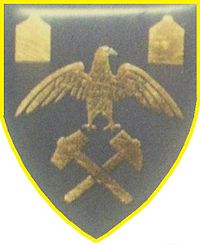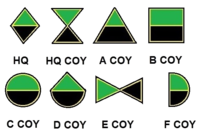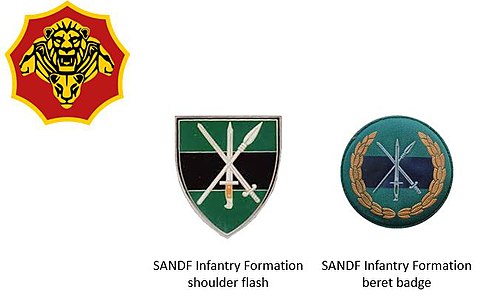Lenong Regiment
| Regiment Paul Kruger | |
|---|---|
 SANDF Regiment Paul Kruger emblem | |
| Active | 1954-present |
| Country | South Africa |
| Allegiance | |
| Branch | |
| Type | Infantry |
| Role | Motorised Infantry/Internal Stability |
| Size | One battalion |
| Part of | South African Infantry Formation Army Conventional Reserve |
| Garrison/HQ | Randfontein, Gauteng, South Africa |
| Motto(s) | Ons sal oorwin (We shall overcome) |
| Insignia | |
| Company level Insignia |  |
| SA Motorised Infantry beret bar circa 1992 |  |
Regiment Paul Kruger [1] is a South African Army reserve motorised infantry unit named after former Zuid Afrikaanse Republiek president, Paul Kruger.
History
Regiment Paul Kruger was raised in 1954 as a motorised infantry unit and was initially headquartered in Krugersdorp.
Name change
By 1960 the unit was renamed Regiment Wes Rand. This was however reverted by 1964.
Garrison
The units HQ moved to Randfontein around 1972, about 20 kilometers away.
Regimental colours
The units eagle symbol depicted the old Transvaal Republican era.
Previous dress insignia

Current dress insignia

Deployments and training
The regiment has been deployed as part of the SANDF throughout Africa, Burundi, DRC; in support of United Nations and African Union peacekeepinh mandates. All members of the Regiment are volunteers, with employment in the civilian roles, they fulfil their responsibilities and duties on top of their duties and responsibilities to their families and employers.
Leadership
| From | Honorary Colonel | To |
| From | Officer Commanding | To |
| From | Regimental Sergeants Major | To
|
Honorary Colonel
- Colonel Jacques Jean-Marie Julienne (2012)[2]
